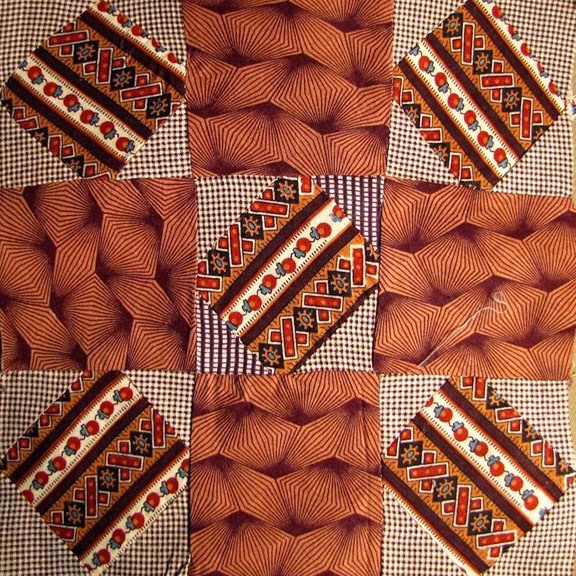Confederate flag block in the center of an album sampler
made for Atwood Cluverius Walker,
date inscribed 1863
Also inscribed over the flag and the yellow flower:
"Be faithful to your flag and when the toils of war are over, may you repose peacefully beneath its folds. You friend Ellen Wright, April 6, 1863."
http://www.unl.edu/plains/gallery/exhibitions.shtml
Atwood Cluverius Walker (1838-1922) survived wounds and prison camp to return to his Virginia home Mount Elba in Walkerton. He married Bettie F. Toombs in 1870 and was survived by four children. His descendants care for the quilt today.
"captured at Hatcher’s Run, Va. March 31, 1865, sent to Johnson’s Island from Washington, D. C. April 9, subscribed and swore allegiance to the United States at Johnson’s Island, Ohio, and released, June 17, 1865, 27 years old Farmer, resident of Walkerton, Va., born in Virginia, fair complexion, light hair, blue eyes, 5’ 10”
When you see the quilt in the cloth a pair of Broderie Perse
blocks with a hound dog print catch your attention.
Atwood Walker must have been a fan of dogs.
This photograph of Walker at a Confederate memorial is at the Virginia Civil War website, where scans of his papers are kept.
The catalog for the exhibit is also on sale at the Museum.



























































